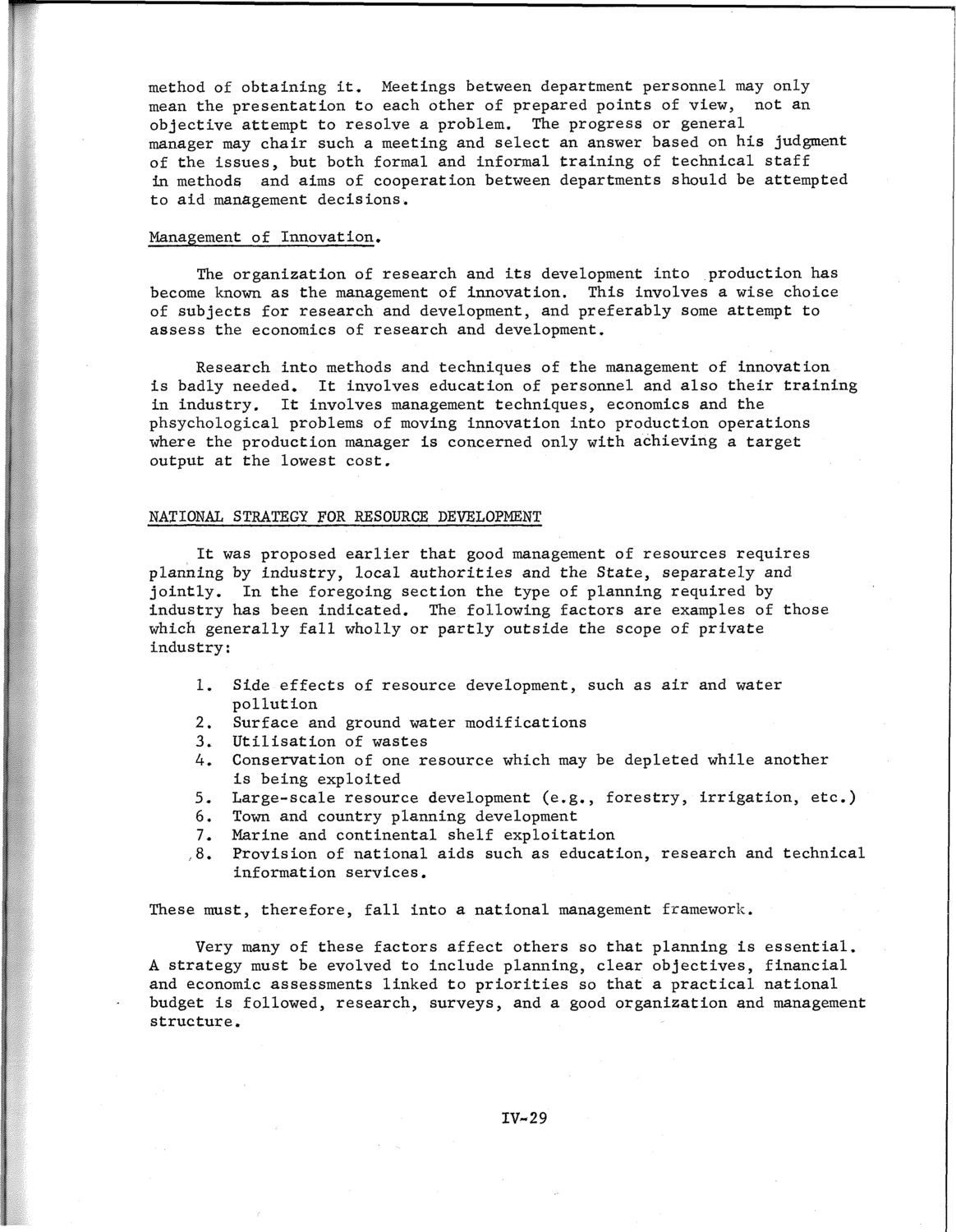| |
| |
Caption: SWE - Proceedings of the First International Conference of Women Engineers and Scientists
This is a reduced-resolution page image for fast online browsing.

EXTRACTED TEXT FROM PAGE:
method of obtaining it. Meetings between department personnel may only mean the presentation to each other of prepared points of view, not an objective attempt to resolve a problem. The progress or general manager may chair such a meeting and select an answer based on his judgment of the issues, but both formal and informal training of technical staff in methods and aims of cooperation between departments should be attempted to aid management decisions. Management of Innovation, The organization of research and its development into production has become known as the management of innovation. This involves a wise choice of subjects for research and development, and preferably some attempt to assess the economics of research and development. Research into methods and techniques of the management of innovation is badly needed. It involves education of personnel and also their training in industry. It involves management techniques, economics and the phsychological problems of moving innovation into production operations where the production manager is concerned only with achieving a target output at the lowest cost. NATIONAL STRATEGY FOR RESOURCE DEVELOPMENT It was proposed earlier that good management of resources requires planning by industry, local authorities and the State, separately and jointly. In the foregoing section the type of planning required by industry has been indicated. The following factors are examples of those which generally fall wholly or partly outside the scope of private industry: 1. 2. 3. 4. 5. 6. 7. ,8. Side effects of resource development, such as air and water pollution Surface and ground water modifications Utilisation of wastes Conservation of one resource which may be depleted while another is being exploited Large-scale resource development (e.g., forestry, irrigation, etc.) Town and country planning development Marine and continental shelf exploitation Provision of national aids such as education, research and technical information services. These must, therefore, fall into a national management framework. Very many of these factors affect others so that planning is essential. A strategy must be evolved to include planning, clear objectives, financial and economic assessments linked to priorities so that a practical national budget is followed, research, surveys, and a good organization and management structure. IV-2 9
| |